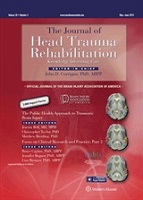Functional status in patients with traumatic brain injury

Keywords:
Fractal D, telemetry, biomedical technology, traumatic brain injury (TBI), clinical indicator
Abstract
The objective of the study was to determine if movement path tortuosity in everyday ambulation decreases in Veterans being treated in a residential setting for traumatic brain injury. Elevated path tortuosity is observed in assisted living facility residents with cognitive impairment and at risk for falls, and tortuosity may decrease over the course of cognitive rehabilitation received by the Veterans. If observed, decreased tortuosity may be linked to improved clinical outcomes. Researchers conducted a longitudinal observational study without random assignment at a Veterans Affairs Medical Center inpatient residential polytrauma treatment facility. Outcomes were measured using the Mayo-Portland Adaptability Index-4, and movement path tortuosity measured by Fractal Dimension (Fractal D). Researchers found that Fractal D, a relatively simple measure of movement path tortuosity can be linked to functional recovery from traumatic brain injury.
Citation
Kearns, W. D., Scott, S., Fozard, J. L., Dillahunt-Aspillaga, C., & Jasiewicz, J. M. (2015). Decreased movement path tortuosity is associated with improved functional status in patients with traumatic brain injury. Journal of Head Trauma Rehabilitation, Advance online publication. doi:10.1097/htr.0000000000000125